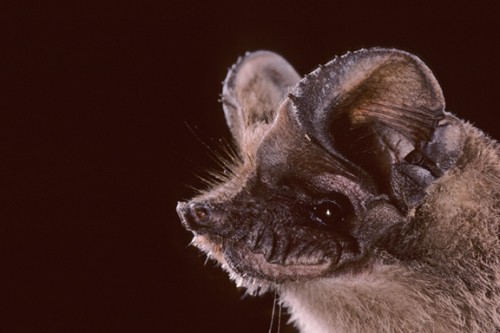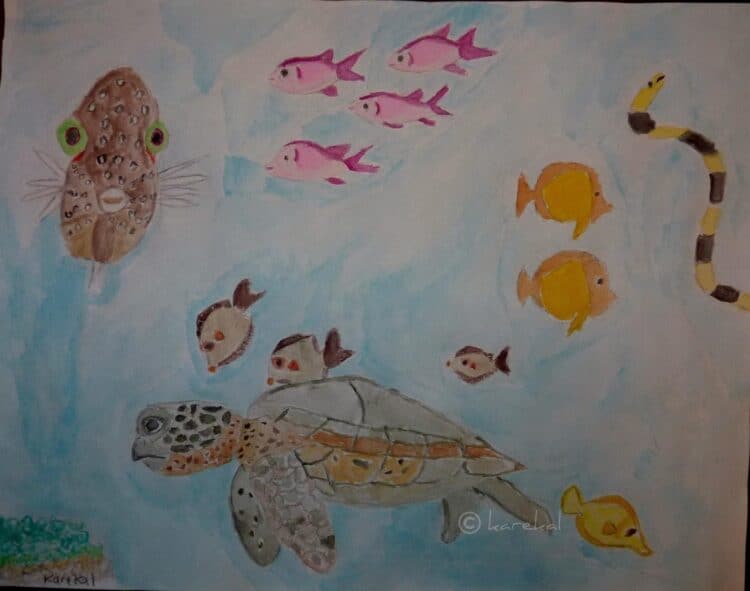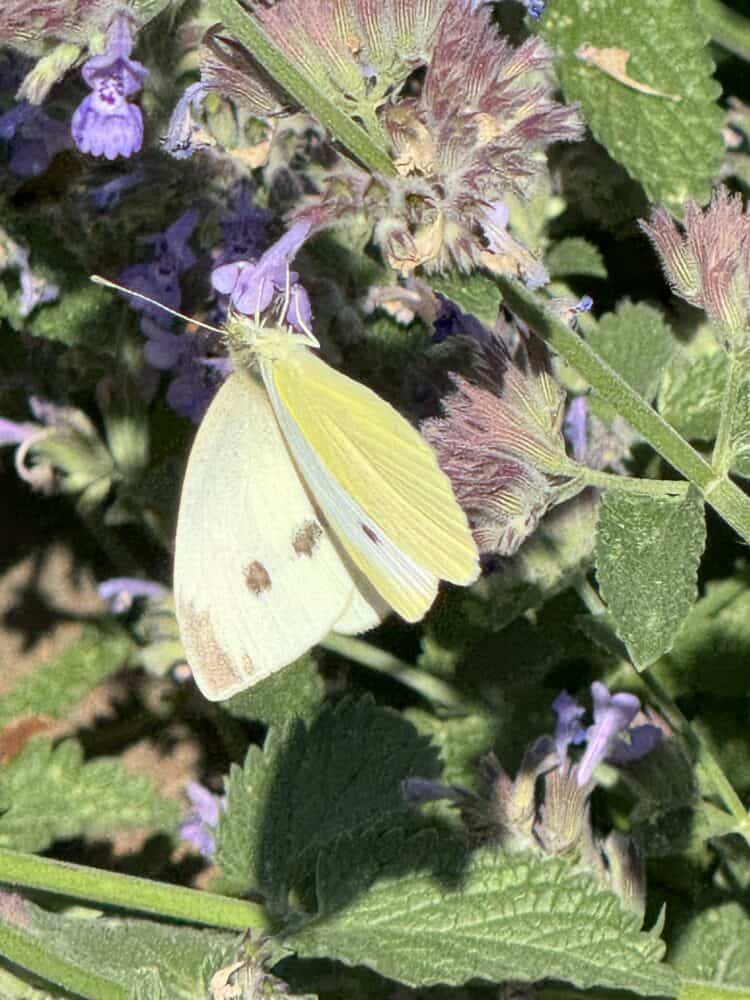When Doppler radar first arrived in the area known affectionately to Texans as the Hill Country, the local television station meteorologists were understandably eager to show off the weather forecasting capabilities of their newest toy. Unfortunately, they got off to a less than impressive start. Night after night that summer, evening thunderstorms were forecast but failed to appear.
Bracken Cave, in the Texas Hill Country, is home to the world’s largest colony of Mexican free-tailed bats. (Photo: © Merlin D. Tuttle, Bat Conservation International, http://www.batcon.org. Used with permission)
This created distrust within the populace and confusion among the weather men and women. Eventually, someone figured out that Doppler couldn’t tell the difference between a microwave reflected by water droplets in the atmosphere and Mexican free-tailed bats (Tadarida brasiliensis) emerging from nearby Bracken Cave.
How many bats does it take to confuse Doppler radar? About 20 million.
Hundreds of Austin residents and visitors gather at the Congress Avenue Bridge every summer night to observe 1.5 million bats emerging to feed (Photo: © Merlin D. Tuttle, Bat Conservation International, http://www.batcon.org. Used with permission)
Several times in my life, I’ve had the privilege of watching, with barely contained glee, as Austin’s famous Congress Avenue bats poured out of the expansion slots below the bridge deck. With 1.5 million bats in residence, the city is home to the world’s largest urban bat colony. But the Bracken Cave colony dwarfs its city neighbor. It’s the world’s biggest, as well as the greatest known concentration of non-human mammals. Modern Americans will never have a chance to witness hordes of bison churning up the prairie or enormous flocks of passenger pigeons darkening the skies, but Bracken Cave—where it takes 4 hours for all the adult bats to stream out of the cave mouth and drift like smoke over Texas to feed—evokes some sense of what has been lost.
While in Austin a couple of years ago to attend the International Urban Wildlife Management Conference, I finally realized a long-time dream to witness this event with my own eyes. I was not disappointed. Bat Conservation International (BCI) owns the cave and the 697-acre buffer zone that keeps development at bay. The organization, which limits the number of visitors, graciously agreed to lead a group of conference attendees to the property, located near San Antonio.
During a brief orientation we learned that the Bracken Cave bats migrate to Texas each spring from their winter home in Mexico, a distance of approximately 1,000 miles. The roof of the cave collapsed at some point in history, forming a perfect amphitheater from which to view the resulting entrance. Members of our group settled in twos and threes to watch, using small boulders as chairs and loveseats while we waited for the day to end and the main event to begin.
Bracken Cave is a maternal colony—no men allowed in this sorority—and soon after the females arrive, each gives birth to a single pup. Mexican free-tailed bat babies are not raised as only children; their mothers park them in a communal nursery set apart from where the adults hang out during the day. With as many as 500 babies per square foot of cave wall, the naked infants generate enough warmth to keep themselves cozy, freeing their mothers to leave each evening to cruise for calories. The downside of this arrangement? When it’s time to feed the offspring, Mom has to find her child somewhere in the mob—a task most human parents would find daunting.
The cave is not a home people would consider sweet. Millions of bats digesting millions of insects from March through October results in an annual deposition of 85 to 100 tons of bat feces, known as guano, on the cave floor. Experts estimate the guano may be 70 feet deep at the very back of the cave (and how one becomes an expert at estimating guano depth is beyond my ability, or desire, to imagine). As part of its stewardship of the site, BCI schedules periodic off-season “mining” of the guano—a practice that goes back the late 1800s—which is currently sold as organic fertilizer.
As you approach the cave from a staging area near the property entrance, the distinctive, acrid smell of bat waste is hard to miss. Consider, if you dare, what it’s like underground. In winter, when the gals head south of the border to hook up with the guys and have the bat equivalent of a “Girls Gone Wild” experience, the cave is a comfortable 68°F; during the summer months, heat generated by all those bat bodies brings the ambient temperature inside to 108°F. Dermestid beetles are so abundant the floor writhes. The beetles feed primarily on guano, but any infant or injured bat who has the bad luck of falling is swarmed and consumed in minutes. Ammonia gas, a by-product of beetle digestion, fills the cave; levels inside are high enough to be fatal to humans so researchers must wear breathing apparatus to enter when the bats are there.
Personally, this is not the kind of place I’d choose to spend the summer. I lived in Texas for nearly 20 years and I have to say, the heat, humidity, and insect life above ground in July and August is as close to hell as I care to experience*
Thankfully, during our field trip the air outside the cave was much more refreshing. It was a beautiful, clear, and blessedly temperate May evening, and before too long we began to see movement near the mouth of the cave. This show featured aerial acrobatics that would be the envy of any Blue Angel pilot. Bats were climbing, diving, banking, and stalling, making literally hundreds of mid-course corrections to avoiding collisions, while also attempting to evade the grasping hands of raccoons that gather near the mouth of the cave and the sharp talons of hawks circling above. It’s a dizzying scene, and the bats are both predator and prey.
What began as a small shower of bats quickly turned into a storm, with thousands of leathery wings mimicking the sound of a downpour. As their numbers continued to grow, they swirled and pulsed like a tornado, spinning in seemingly endless circles within the bowl of the sinkhole. Only after I raised my eyes from the dervish before me did I see a dark, smoky trail of bats stretching off beyond the horizon. And still the deluge continued all around us… bats, and more bats, and still more bats.
If, as Doppler radar would have us believe, bats were indistinguishable from raindrops, I’d have been drenched. And singin’, just singin’, in the rain.
.
NOTE: Why are these bats called “free-tailed”? Because, unlike many species, the tail is not completely surrounded by a membrane, known at the patagium, that stretches between the animals’ legs—its at least partially “free” (see illustration below). The patagium also stretches between the fingers and connects the front and rear limbs to form the wing.
Mexican free-tailed bat (left) and a Townsend’s big-eared bat (right)
© 2011 Next-Door Nature— no reprints without written permission from the author. Thanks to Bat Conservation International for granting permission to use their photos. The drawings used above are open-source content.
*OK, I’ll confess to some hyperbole for the sake of the story. I actually enjoyed living in Texas, although less so during the summer.
Kieran Lindsey
Kieran Lindsey loves looking for wild things in all the wrong places... so she became an urban biologist. Her quest to entice others to share this passion led to flirtations with (gasp!) the media—as a columnist for the Houston Chronicle; as host of KUNM-FM’s Wild Things; as producer of an Emmy® winning wildlife documentary; and at her Next-Door Nature blog. Kieran has way too much fun as official Animal-Vehicle Biologist for NPR's Car Talk, and she isn’t ashamed to admit it.








Leave a Reply